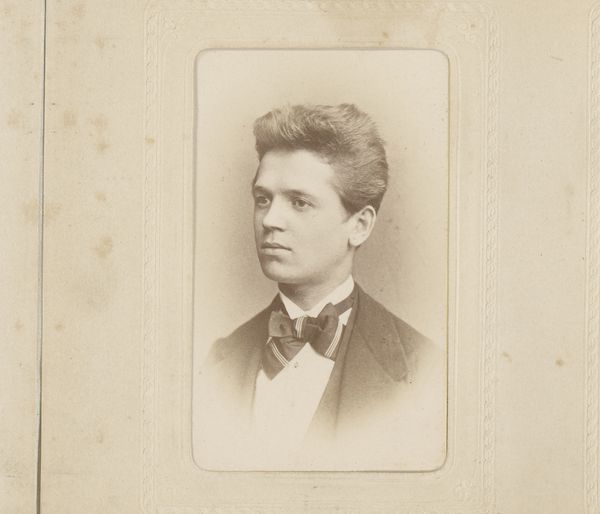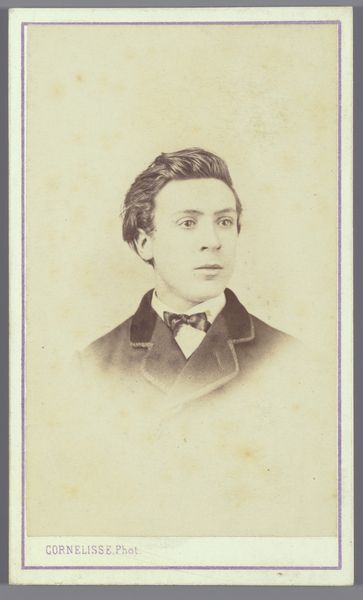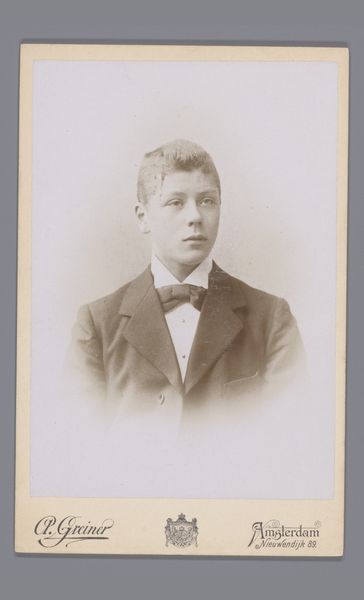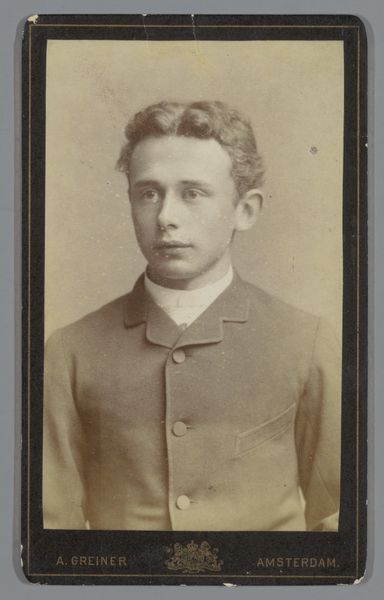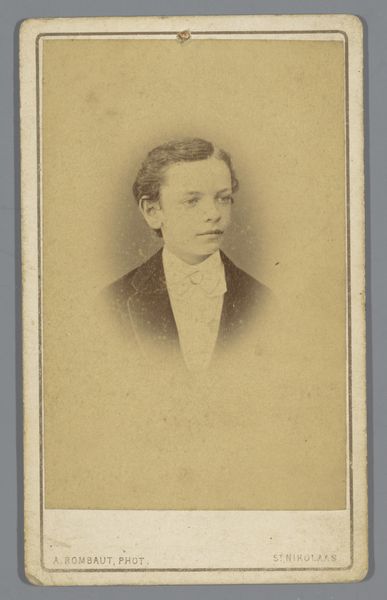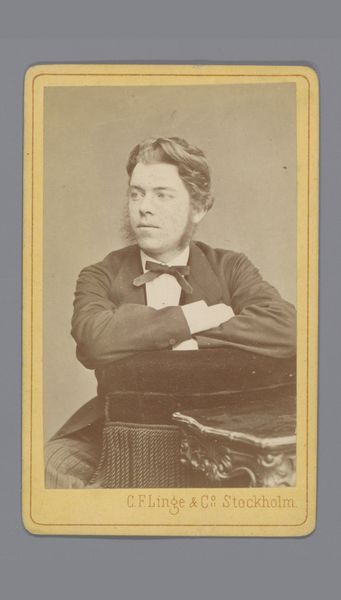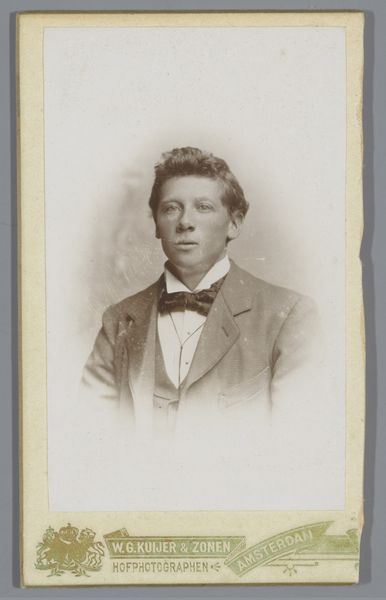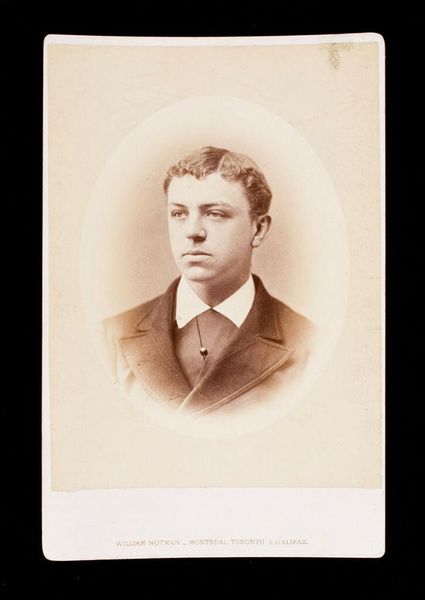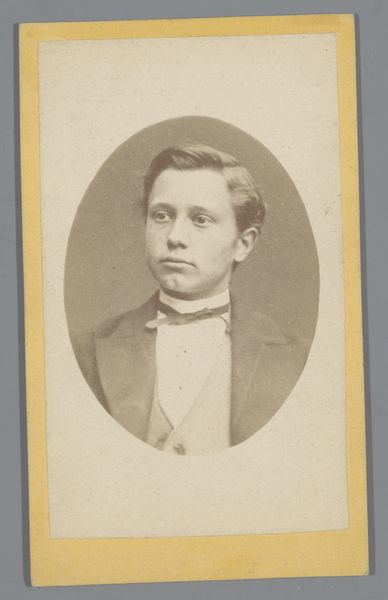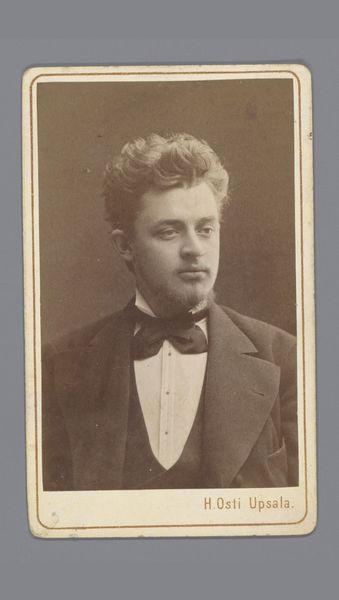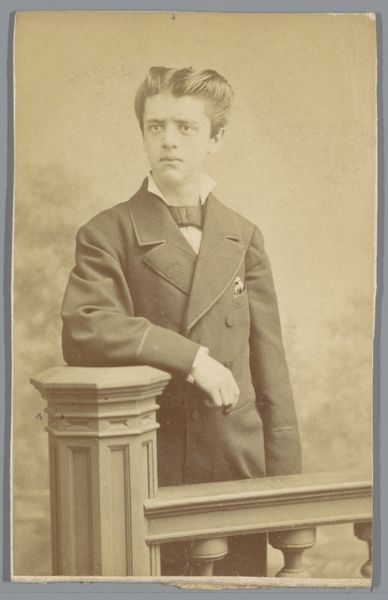
Dimensions: height 104 mm, width 62 mm
Copyright: Rijks Museum: Open Domain
Curator: What strikes me immediately is this stillness. It's almost hauntingly quiet, isn't it? The soft sepia tones add to this sense of suspended time. Editor: Indeed. This piece is a daguerreotype from 1872, attributed to Henri Osti, though the sitter is recorded as an "unknown man, aangeduid als Ivar Lundberg," so even his identity carries a question mark. Curator: And those soft browns... It really is a photograph printed on paper, or what type of photographic method, because of the sepia tones? You see the past directly, you can sense the atmosphere, so serious and studied. And then, this carefully arranged fashion... it feels deliberate, almost performative. Editor: Precisely. The Romantic aesthetic dictated that portraiture captured the sitter's essence, reflecting inner emotions outwardly through details of dress and pose. That black bow tie and slightly too-big suit are indicators of that. Even the studio signature is clearly legible, indicating to customers and competitors that this is where to have such formal commemorative portraits done. Curator: The averted gaze makes the portrait. It reminds me of Hamlet’s “to be or not to be” speech—it is this sense of searching within but at the same time acknowledging, I mean… confronting us, too. And yes, this formality... it feels almost stifling by today's standards, doesn't it? Like the gentleman is weighed down. Editor: It certainly speaks to an era of specific codes of conduct. I’m reminded of the symbolic significance attached to clothing itself. A waistcoat buttoned or unbuttoned communicated nuances about one's intentions; hats could be a social minefield! That's lost on most contemporary viewers now, I suspect, outside of dedicated studies. Curator: Yet I find myself pondering his untold stories...What were his dreams? What shadows was he trying to cloak with that buttoned-up coat? Photography is amazing—you get glimpses like these... but it will not show more, will not tell more. It leaves all those doors invitingly, disturbingly ajar. Editor: It serves as a time capsule, certainly. Consider that for many at this time in the 19th century, this photograph would have been the primary or even solitary visual record they ever possessed. In an era of burgeoning scientific advancements interwoven with powerful nostalgia for fading aristocratic orders... images such as these embodied societal desires. Curator: That notion... the "only image" that someone might have had taken of them, the ultimate depiction...It adds another layer of fragility and reverence doesn't it? It feels almost like witnessing something private we shouldn’t really see. Thank you for opening my mind to this beautiful treasure. Editor: My pleasure entirely. It’s a journey down intriguing memory lanes when images transcend their simple aesthetic functions and invite exploration, contemplation, and appreciation for cultural symbols of human expression, that photography allows.
Comments
No comments
Be the first to comment and join the conversation on the ultimate creative platform.
